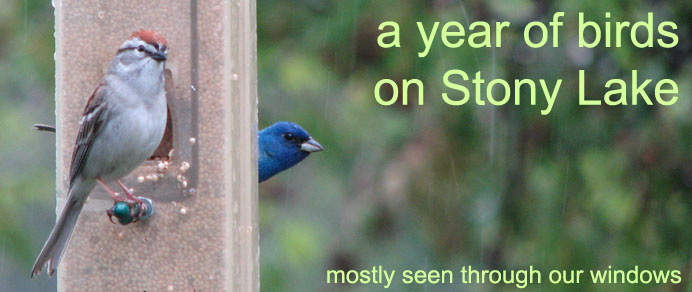
Over the years we've looked at many thousands of redpolls swarming our niger feeders.
At times we've been able to study several hundred birds at once. We've marveled at their variability. Some are heavily streaked: some are radiant pink. We have always scrutinized the palest birds in these flocks, hoping to differentiate the Hoary Redpolls. Until today, we've never been satisfied that the characters of the pale birds fell enough beyond range of the Common Redpoll to call them Hoary Redpolls.

Today, a pale bird joined the throng of Song, Fox and American Tree Sparrows feeding below the sunflow seed hopper. It never joined the Pine Siskins, Common Redpolls and American Goldfinches tending the niger seed silo. The characters - bill shape and nasal feather tufts, frosty colour and reduced streaking - correspond closely with the
exipes reace of the Hoary Redpoll. This is a new bird for our our yard and our
BIGBY list!
This was one of 22 species we had visiting our feeder. The high number of individuals was also impressive - American Tree Sparrows, Dark-eyed Juncos and Common Redpolls numbered more that 50 each.
I scattered some cracked corn on the roof of my workshop, beyond the reach of the deer and just right for a pair of Rock Pigeons.

Purple finches reappeared only a week ago after being wintering to the south.






















